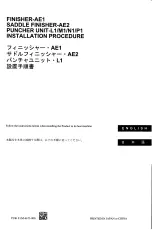
E T X T S O L I T H I U M B A T T E R I E S
10
Be careful that the positive battery terminal does not or will not touch any metal parts of the
aircraft.
Battery Vent Installation
The ETX900-TSO includes a thermal run-away containment system. The containment
system includes vent tubes designed to carry vapor or smoke to the exterior of the aircraft in
the event of a thermal run-away condition. There are no emissions during normal operation.
Both tubes exiting the battery are for outflow and both are required. For specific installation
instructions based on a specific model aircraft and or battery mounting location, see the
Appendix. Plus, follow the below guidelines for properly installing the vent tubes.
Route the vent tubes to the outside of the aircraft or a compartment sealed-off from
the passenger cabin that is vented to the outside. Be sure emitted gases will not be
directed to cabin air intakes.
Routing of vent tubes should include a 6” vertical section after exiting the battery
and a downward slope so condensate drains to the outside of the aircraft.
Secure the vent tubes within 12” of the battery and within 12” of the aircraft exit
Be careful not to crush or restrict flow through the tubing.
The minimum bend radius is 3”; tighter bends could cause the tubing to kink.
Only EarthX supplied tubing should be used. The tubing is chemical resistant and
rated for 500°F (1/4” ID, 5/16” OD Teflon tubing).
The supplied stainless steel elbows allow the vent tubes to be routed to the left or right side
of the battery with minimal headroom requirements (1” above the battery height). The tube
stubs on the battery are cut to different lengths so the tubing can be routed one on top of
the other. To install the supplied elbows, it is helpful to heat the tubing to a couple hundred
degrees F before pressing them into the tubes. Be sure the entire barbed part of the elbow is
completely inserted into the tubing. Other barbed fittings may be used as long as they do
not restrict flow.
Fittings must be brass or stainless if installed within 2 feet from the battery (1/4” tube length
of 2 feet). For fittings more than 2 feet from the battery they may be nylon. See figure in
the specifications section above for tubing connections to the battery and clearances.
Installation of the battery in the cockpit requires the battery is properly vented over-
board.
Fault Monitoring Installation
The ETX Hundred Series batteries have a discrete output that can be connected to many aircraft
Electronic Flight Instrument System (EFIS) electronics or to a remote mounted LED. The
diagrams below detail the required connections for both type installations. For specific
installation instructions based on a specific model aircraft and or battery mounting location, see
the Appendix or refer to the instruction given in the STC.










































